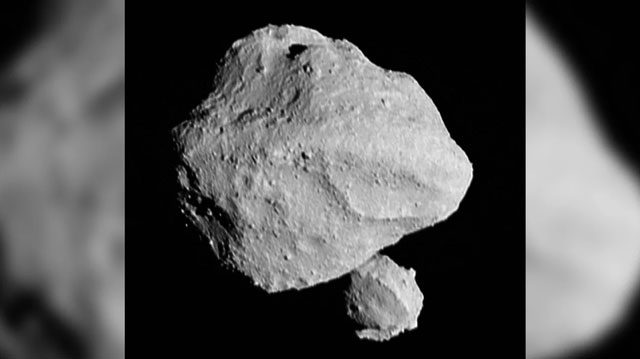As NASA’s Lucy mission approaches its first research target, the asteroid Dinkinesh, the agency unexpectedly discovers a “companion” closely following this asteroid.
Dinkinesh is located in the main asteroid belt of the Solar System, situated between the orbits of Mars and Jupiter. However, what astronomers initially believed to be a single asteroid has turned out to be two distinct celestial bodies.

Asteroid Dinkinesh and its surprising companion.
The lead investigator of the Lucy mission, Hal Levison from the Southwest Research Institute (USA), expressed that naming this asteroid Dinkinesh, which means “wonderful” in Ethiopian, was indeed a wise decision.
“At the start of the Lucy mission, we planned for the spacecraft to fly by a total of 7 asteroids. With the addition of Dinkinesh, two moons, and now the unexpected satellite of Dinkinesh, we can ultimately study up to 11 targets,” Levison told CNN.
The Lucy mission team estimates that the larger of the two bodies now identified as the Dinkinesh binary system has a diameter of 805 meters, while the smaller satellite measures 220 meters across.
This week, the Lucy spacecraft reached a position approximately 425 kilometers away from the asteroid Dinkinesh. This approach aims to test the onboard equipment, including a target tracking system that allows the spacecraft to automatically locate celestial bodies and maintain them in view while traveling at a speed of 4.5 kilometers per hour.
The data collected during this flyby will also enable the NASA team to study smaller asteroids and compare them with larger asteroids from previous missions.





















































